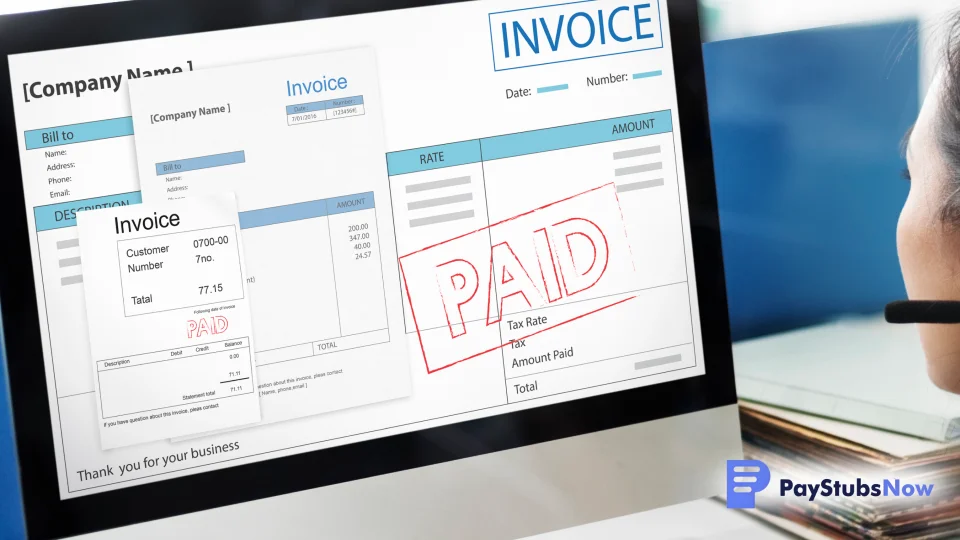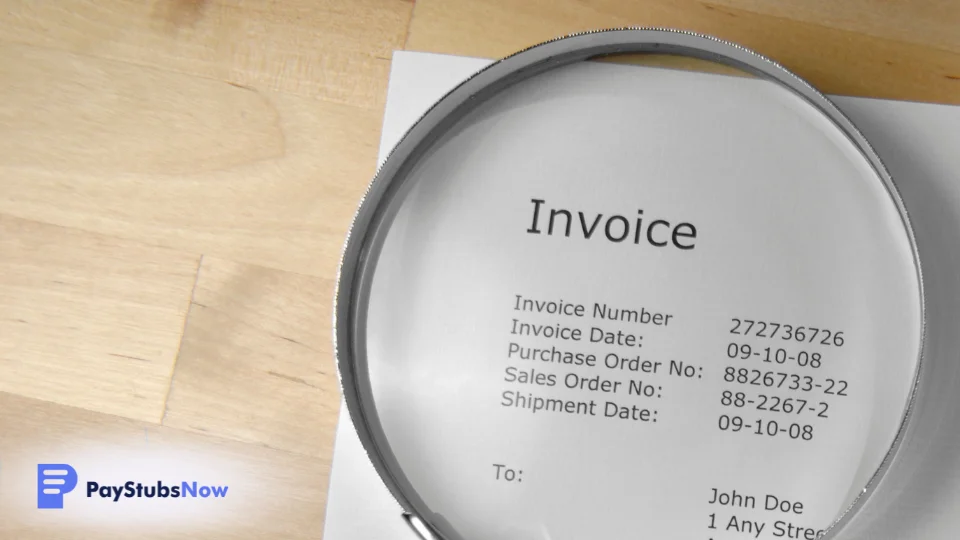


Every transaction in business, no matter how big or small, involves documentation—and the issuance of invoices is at the heart of it all. One often-overlooked yet essential detail is the invoice number, which plays a crucial role in organizing, tracking, and ensuring the accuracy of financial records. But what makes this seemingly simple number so vital to the smooth running of your business operations?
In this article, we’ll dive into the purpose behind invoice numbers, how to format them effectively, and best practices for integrating them into your accounting process to streamline operations and stay compliant.

An invoice number is a unique, sequential identifier assigned to an invoice, granting it distinct status in a business's record-keeping system. Each invoice number is typically numeric or alphanumeric and helps categorize and manage transactions effectively. Having a unique invoice number helps both the seller and the buyer reference specific documents without confusion, even if two separate invoices are issued for the same client or similar purposes.
Invoice numbers go beyond simple identification to serve many business functions. These numbers:
Invoice numbers are essential for tracking payments and outstanding balances . When a customer makes a payment, referencing the invoice number ensures that the funds are correctly allocated to the corresponding transaction.
When dealing with multiple outstanding invoices from the same client, invoice numbers help businesses easily monitor which invoices have been paid and which remain outstanding. This streamlines the accounts receivable process and minimizes the risk of errors or delays in payment reconciliation.
Whether for tax and accounting purposes or simply to track down a specific transaction from months or years ago, the unique invoice number is an invaluable resource for finding what you're looking for.
Invoice numbers are not merely a way to differentiate between similar records, but are also an indispensable part of a well-organized financial system. Having such a system in place means greater accuracy for your accounting team and a much better understanding of the company’s financial health.
Businesses are required to maintain comprehensive records of their income and expenses for tax purposes. Invoices are a critical component of these records. Invoice numbers ensure that each sales transaction can be easily identified and linked to supporting documentation.
During tax audits, having a well-organized and consistently numbered invoicing system can expedite the process and demonstrate the accuracy and integrity of your financial records to tax authorities.
When clients pay several invoices or engage in ongoing projects, confusion regarding payments can arise and harm relationships. A distinctly numbered invoice allows both parties to refer to the exact details of a project, eliminating any ambiguity or confusion.
Whether responding to a client inquiry about a payment or addressing a dispute regarding an invoice, the invoice number provides a common reference point, ensuring that everyone is on the same page.
 When it comes to choosing a format for invoices, businesses have several options. Here are some options to consider:
When it comes to choosing a format for invoices, businesses have several options. Here are some options to consider:
Sequential numbering is one of the simplest formats for invoice numbers. Each invoice receives a unique number that follows a linear progression (e.g., 001, 002, 003). This straightforward method allows businesses to easily track the flow of invoices while also minimizing confusion.
Using a date-based format for invoice numbers offers an additional level of context. For instance, an invoice might follow the format YYYYMMDD-001, combining the date with a sequential number specific to that day. This method can help businesses quickly identify when an invoice was issued, which can be particularly useful for time-sensitive transactions.
For businesses that manage multiple clients or projects, incorporating client or project codes into invoice numbers can enhance organization. By using a format like CLIENT123-001, businesses can easily customize their numbering to reflect which client the invoice corresponds to, promoting clear tracking and accountability.
With this format, you can combine letters and numbers to create a more complex system for your invoices. This method can be used to signify categories, types of services, or special deliverables.
For example, the first invoice could look like 'SVC-2023-001,' which would signify that it was a service invoice that originated in the year 2023. From here on, all future invoices can be numbered sequentially, which reflects a degree of customization that represents many aspects of the business.
 Selecting the right invoice numbering system is crucial for efficient financial management. Consider the following factors when making your decision:
Selecting the right invoice numbering system is crucial for efficient financial management. Consider the following factors when making your decision:
 After choosing an invoice format, establish a consistent process for assigning invoice numbers. Here are some tips to do this:
After choosing an invoice format, establish a consistent process for assigning invoice numbers. Here are some tips to do this:
When it comes to assigning invoice numbers, consistency is key. Whether your business uses a pre-designed template or invoicing software, establishing a unified approach across all departments helps minimize confusion and ensures your financial records remain clear.
Begin with a clear starting point for your chosen format. For sequential numbering, this might be 001 or 1 at the beginning of your business operations or a new fiscal year. For other formats, ensure the date, client code, or project code components are correctly implemented from the outset.
If an invoice needs to be voided or corrected, do not reuse the original invoice number. Instead, clearly mark the original invoice as "VOIDED" and issue a new invoice with a new, sequential number. Maintain a record of any voided or corrected invoices for audit purposes.
Manually assigning invoice numbers can be time-consuming and prone to errors. Leveraging accounting software or automated invoicing tools can significantly improve the efficiency and accuracy of the invoicing process. Paystubsnow, for example, automates this process with its dedicated invoice feature to ensure that each invoice receives a unique and properly formatted number.
Following certain best practices in invoice numbering is crucial to maintaining accurate financial records for smooth accounting processes.
Maintaining a consistent invoice numbering format is instrumental to effective accounting. Stick to the format you have chosen consistently across all invoices. Deviating from the established format can lead to confusion and difficulties in invoice number tracking and reconciliation.
Duplicate invoice numbers can create confusion when tracking payments, while skipped numbers can raise red flags during audits. Make sure that each invoice has a unique number and that there are no gaps in the sequence.
While occasional skips can happen due to voided invoices, a systematic approach like checks and balances should minimize these occurrences.
Consider aligning your invoice numbering with your fiscal year or quarterly cycles. Resetting the sequential number at the beginning of each period (e.g., 2025-001, 2025-002) can help in organizing records by specific timeframes.
Leaving invoice numbers blank on invoices can lead to considerable confusion and complicate recordkeeping. Always assign a number to each invoice before issuing it to clients to maintain clarity and consistency in your records.
Maintain a comprehensive record of all issued invoices, including their corresponding numbers. This is essential for internal and external audits and tax reporting requirements. Ensure your invoicing system allows for easy retrieval of past invoices based on their numbers.
Establishing a clear and consistent approach to assigning invoice numbers is essential for keeping your billing process accurate, professional, and audit-ready. From choosing a format to tracking changes and automating when possible, a structured system helps ensure your records stay organized and error-free.
Paystubsnow makes that easier by offering a user-friendly platform with pre-designed invoice templates and built-in invoice numbering. Whether you're sending one invoice or hundreds, our tool helps streamline your workflow and reduce the risk of duplication or manual errors.
Ready to take control of your invoicing process? Create an invoice now and experience our tool firsthand